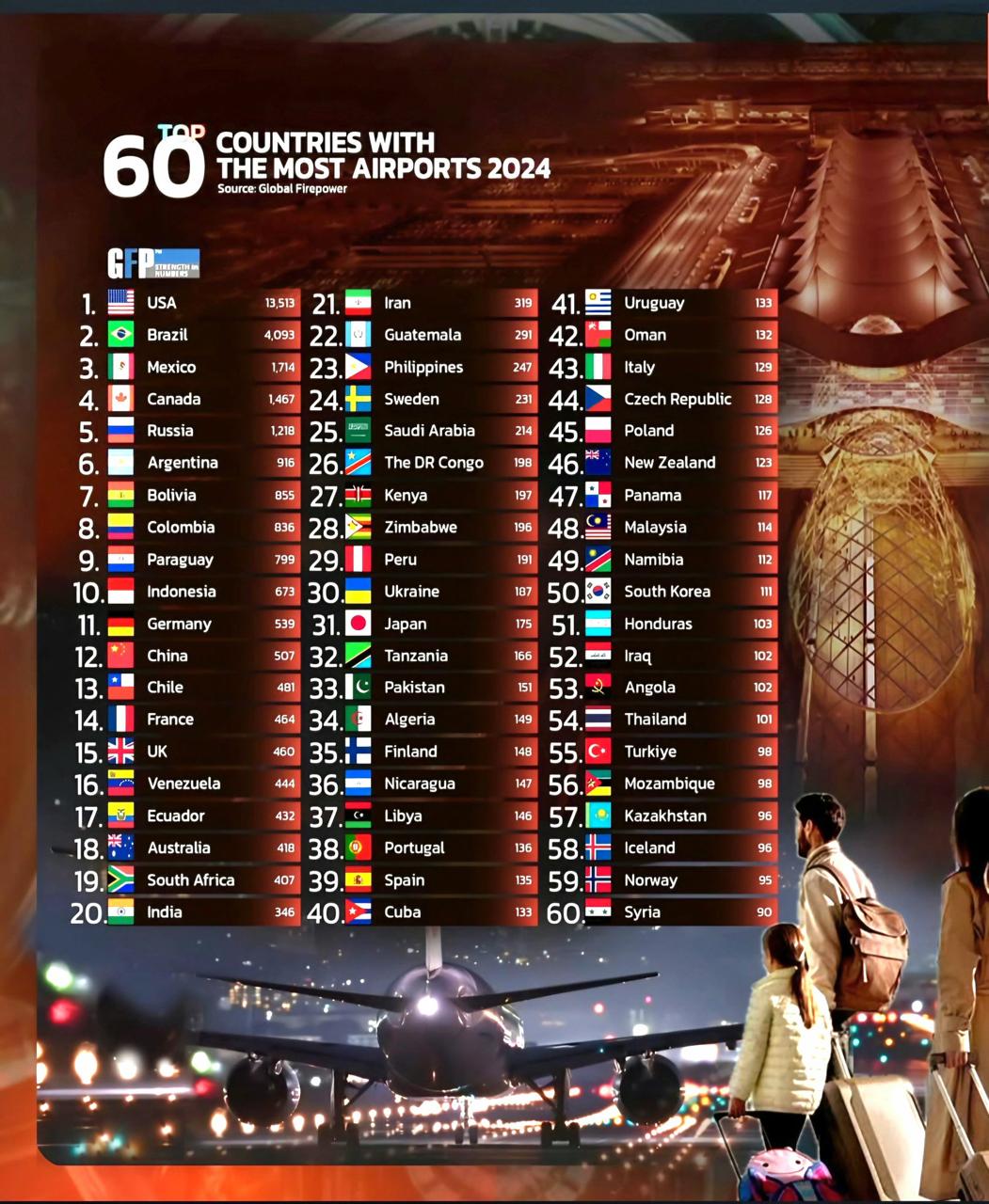The Global Firepower Report 2024 has released its latest ranking of countries with the most airports, offering a fascinating glimpse into the global aviation landscape. The United States continues to dominate with an unmatched 13,513 airports, reaffirming its position as the world’s air travel superpower.
From Brazil’s extensive domestic network to India’s rapidly expanding aviation infrastructure, the list highlights how connectivity drives economic growth, tourism, and strategic mobility across continents.
Top 10 Countries with the Most Airports (2024):
1- United States – 13,513 airports
2- Brazil – 4,093 airports
3- Mexico – 1,714 airports
4- Canada – 1,467 airports
5- Russia – 1,218 airports
6- Argentina – 953 airports
7- Bolivia – 855 airports
8- Colombia – 836 airports
9- Paraguay – 799 airports
10- Indonesia – 673 airports

India’s Aviation Growth Story
India ranks 20th globally with 346 airports, reflecting the nation’s accelerating expansion in civil aviation under the UDAN (Ude Desh ka Aam Nagrik) regional connectivity scheme.
New airports in Tier-2 and Tier-3 cities — from Jewar (Noida International Airport) to Mopa (Goa) and Deoghar (Jharkhand) — are propelling India closer to becoming a global aviation hub.
With passenger traffic projected to surpass 500 million annually by 2030, India is set to climb higher on this global ranking in the coming years.
Regional Insights:
North America dominates the chart with over 15,000 airports combined (USA + Canada + Mexico).
South America’s Brazil, Argentina, and Colombia show impressive domestic air connectivity due to vast land areas.
Europe’s Germany, France, and the UK maintain strong infrastructure with 350–500 airports each.
Asia’s aviation growth is led by China (507), India (346), and Indonesia (673) — highlighting the region’s booming travel and logistics sectors.
Aviation as a Growth Engine
The number of airports in a country isn’t just about travel — it reflects economic strength, defense readiness, tourism infrastructure, and global integration.
With massive investments in green airports, cargo hubs, and AI-based air traffic systems, the world’s air map is changing faster than ever before.


